10 Health Risks Every Irish Staffy and Bull Breed Owner Must Know (And How to Keep Your Dog Thriving)
- Advanced Animal Care
- Aug 21
- 6 min read

10 Health Risks Every Irish Staffy and Bull Breed Owner Must Know (And How to Keep Your Dog Thriving)
Bull breeds, like the Irish Staffy, are renowned for their muscular builds, a trait that defines their strength and athleticism. Keeping these dogs well-muscled is essential for their health and vitality, but illness, lack of exercise, or genetics can make this challenging. Ageing dogs may also face muscle atrophy or loss due to sarcopenia. Give them a helping hand with Advanced Animal Care’s Hench Range Empower, JackedBite, JayFuel AAC Dom-inate, Muscle Building Supplements or Canine Comfort Complete Superior Muscle and Nutritional Support, formulated with amino acids, and essential nutrients to support muscle growth, recovery, and vitality in active and ageing Bull breeds alike.
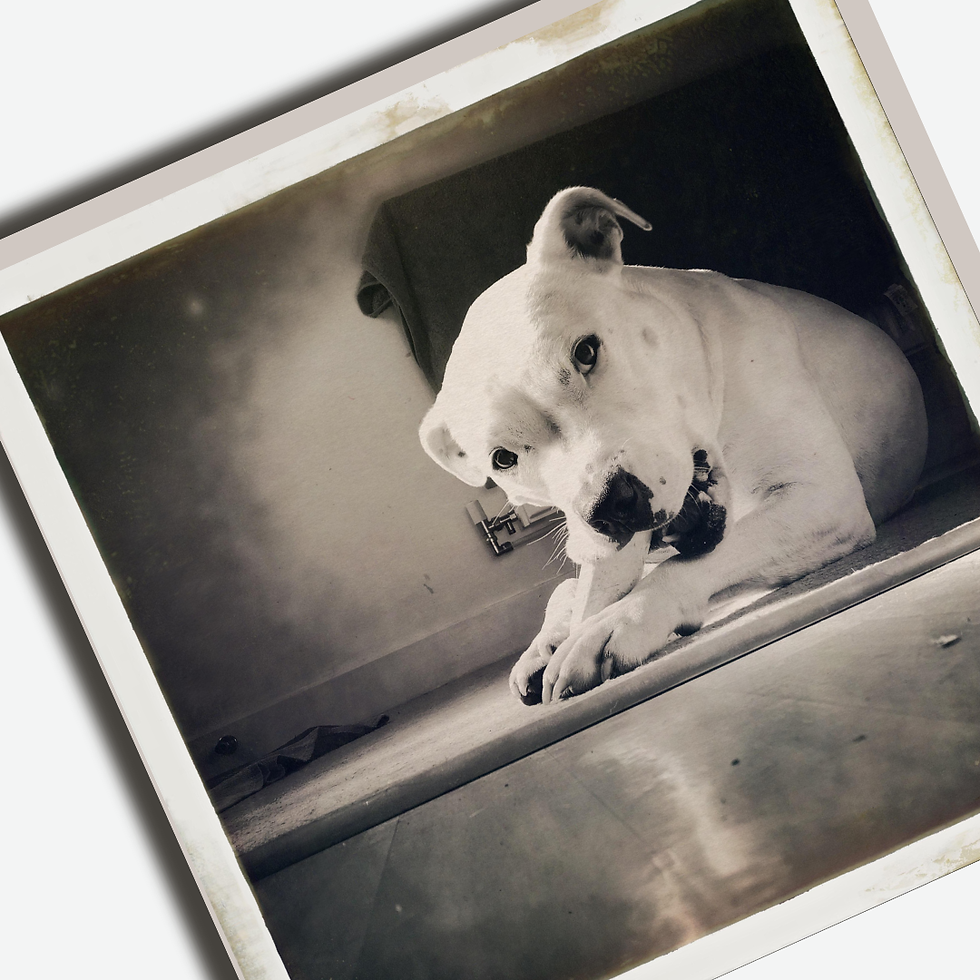
Owning an Irish Staffy or another Bull breed is a joy like no other. Their muscular build, loyal heart, and boundless energy make them the perfect companion for adventures big and small. But as devoted owners, we need to be aware of the health challenges these breeds can face. From hip dysplasia to skin sensitivities, Bull breeds are prone to specific issues that can affect their quality of life. The good news? With the right care, you can keep your pup thriving for years to come. In this guide, we’ll uncover the top 10 health risks for Bull breeds, including the Irish Staffy, and share practical tips to manage them. Whether you’re in the UK, the US, or beyond, this blog will help you spot warning signs and take action—because your furry friend deserves the best.
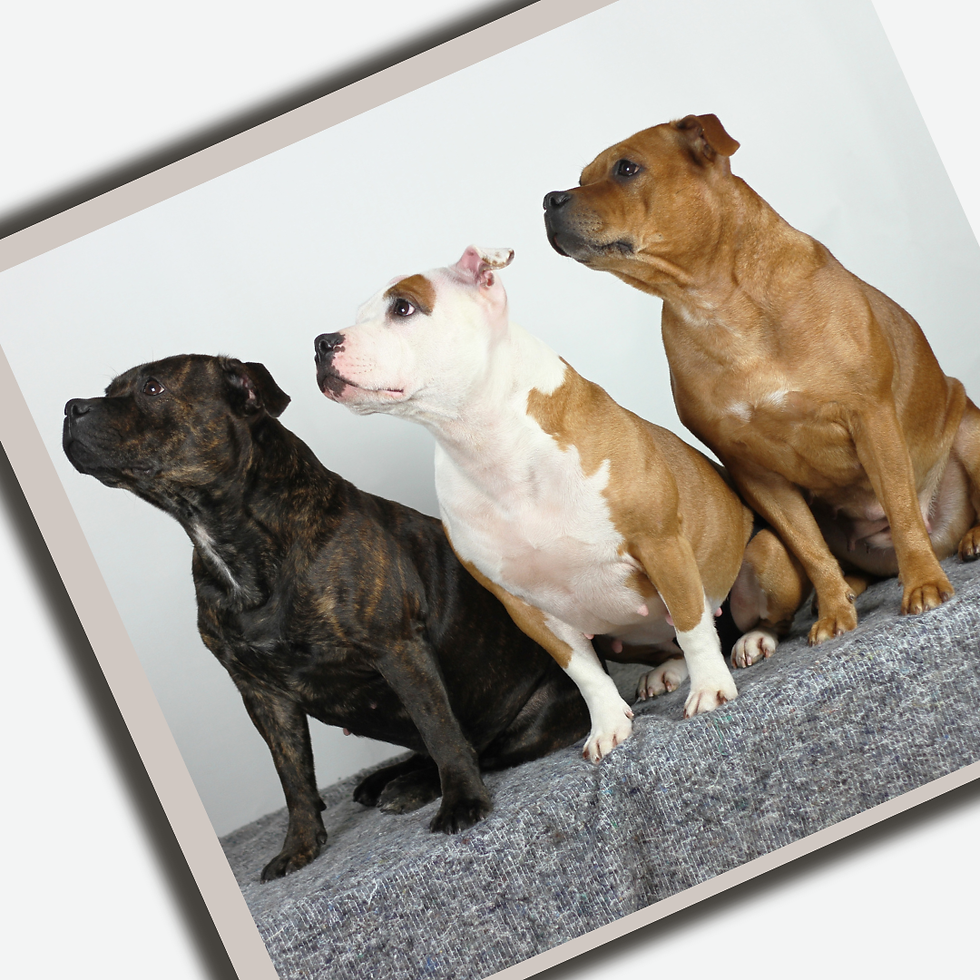
Why Bull Breeds Need Extra Care
Bull breeds, like the Irish Staffy, are known for their strength and resilience, but their unique genetics and sturdy builds make them susceptible to certain health conditions. As a responsible owner, understanding these risks is the first step to ensuring a long, happy life for your dog. Regular vet visits, a balanced diet, and high-quality gear—like our handcrafted Harwering leather collars and leads—can make all the difference. Let’s dive into the top health concerns and how you can address them

Top 10 Health Risks for Bull Breeds (And What to Do About Them)
1. Hip Dysplasia
What It Is: Hip dysplasia is a genetic condition where the femoral head doesn’t align properly with the acetabulum, leading to joint instability, pain, and arthritis. It’s common in Bull breeds due to their muscular build.
Signs to Watch For: Limping, difficulty climbing stairs, or reluctance to run or jump.
What You Can Do: Maintain a healthy weight to reduce joint stress. Supplements like Advanced Animal Care’s Joint and Hip containing glucosamine and chondroitin, may support cartilage health and mobility. Regular, low-impact exercise, such as walks with a comfortable harness like our Harwering leather leads, can help. Schedule X-rays with your vet to assess hip joint integrity early. Explore joint support options at www.advancedanimalcare.shop.
2. Elbow Dysplasia
What It Is:
Elbow dysplasia involves abnormal development of the elbow joint, often due to conditions like fragmented coronoid process or ununited anconeal process, causing lameness and osteoarthritis.
Signs to Watch For: Stiffness, swelling, or favouring one leg.
What You Can Do: Avoid high-impact activities like jumping. Feed a nutrient-rich diet, and consider Advanced Animal Care’s Canine Comfort Complete repair and joint function. A sturdy, well-fitted collar or harness ensures safe, controlled walks to prevent strain. Visit www.advancedanimalcare.shop for joint health solutions.
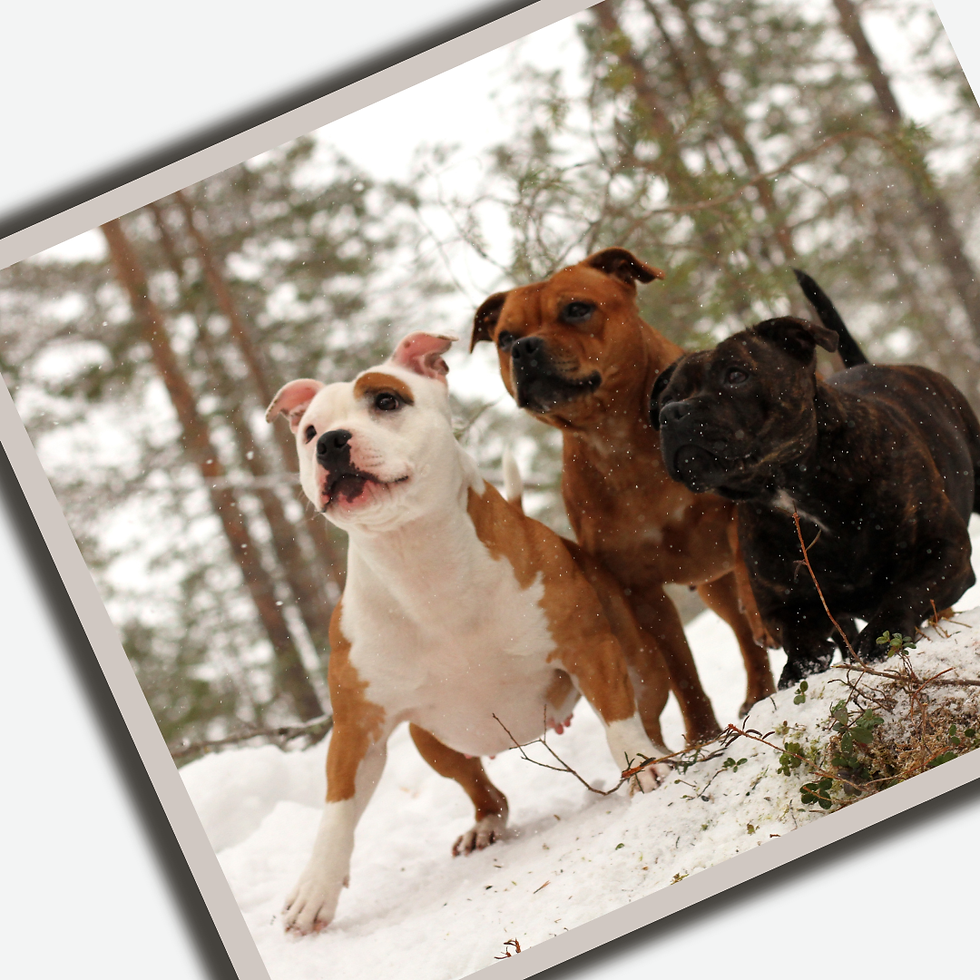
3. Skin Issues
What It Is:
Bull breeds often have sensitive skin, leading to allergic dermatitis, hot spots, or pyoderma, especially in humid climates like parts of Australia or the US.
Signs to Watch For:
Excessive scratching, red patches, or hair loss.
What You Can Do: Use hypoallergenic shampoos and check for fleas regularly. Change Food, For Itchy ears try Thorned@Canker HERE
Advanced Animal 18- in -1- Vitamims, may help nourish skin and reduce inflammation. Opt for soft, high-quality collars like our handcrafted leather designs to avoid chafing sensitive skin. HERE

4. Heart Conditions
What It Is:
Some Bull breeds are prone to dilated cardiomyopathy (DCM), a condition where the heart muscle weakens, impairing its ability to pump blood effectively.
Signs to Watch For: Lethargy, coughing, or difficulty breathing.
What You Can Do:
Schedule regular vet check-ups with heart screenings, such as echocardiograms. A balanced diet with Advanced Animal Care’s Nutrition Formula may support overall wellbeing, including cardiovascular health. Avoid overexertion, especially in hot weather, and use a lightweight lead for gentle walks. Explore nutritional supplements at www.advancedanimalcare.shop.
5. Respiratory Problems
What It Is:
Brachycephalic Bull breeds, with their short nasal passages, may develop Brachycephalic Obstructive Airway Syndrome (BOAS), characterised by narrowed airways, elongated soft palate, or stenotic nares. This leads to inefficient breathing, reduced oxygen intake, and increased risk of heatstroke or collapse. Severe cases can cause laryngeal collapse or chronic hypoxia.
Signs to Watch For: Snoring, wheezing, excessive panting, or exercise intolerance, especially in hot or humid conditions. Severe cases may show cyanosis (blue gums) or fainting.
What You Can Do: Keep your dog in a cool, well-ventilated environment and avoid strenuous activity during warm weather. Monitor respiratory rate at rest (normal is 15–30 breaths per minute) and consult a vet if it exceeds 40. Surgical correction, such as soft palate resection or nares widening, may be needed in severe cases. Weight management is critical, as obesity exacerbates breathing difficulties. Regular vet evaluations, including airway assessments, can help manage this condition.

6. Eye Conditions
What It Is:
Bull breeds may develop cataracts (lens opacity) or progressive retinal atrophy (PRA), a degenerative condition leading to vision loss.
Signs to Watch For: Cloudy eyes, bumping into objects, or difficulty navigating in low light.
What You Can Do:
Schedule regular eye exams with your vet to monitor for early signs. A nutrient-rich diet containing antioxidants, may support eye health. Ensure safe walks with a reliable collar or lead to guide dogs with vision challenges. Visit www.advancedanimalcare.shop for wellness supplements.
7. Obesity
What It Is:
Bull breeds can gain weight easily, increasing the risk of joint, heart, and respiratory issues due to excess strain on the body.
Signs to Watch For:
Difficulty feeling ribs or a lack of defined waistline.
What You Can Do: Feed measured portions of high-quality food and avoid table scraps. Regular walks.

8. Joint Problems
What It Is:
Beyond dysplasia, Bull breeds may develop osteoarthritis, a degenerative joint disease causing cartilage loss and chronic pain, especially in older dogs.
Signs to Watch For:
Reluctance to move, stiffness after rest, or limping.
What You Can Do: Provide a supportive bed and limit jumping. Advanced Animal Care’s Joint Formula may help reduce inflammation and improve mobility. Use a comfortable harness for walks to ease joint strain. We have more blog pages on this subject, check these out .

9. Gastrointestinal Issues
What It Is:
Some Bull breeds are prone to gastric dilatation-volvulus (GDV, or bloat), a life-threatening condition where the stomach twists, or other digestive sensitivities.
Signs to Watch For: Vomiting, bloating, or restlessness after eating.
What You Can Do:
Feed smaller, frequent meals and avoid exercise right after eating. If bloat is suspected, contact a vet immediately for emergency help
10. Genetic Disorders
What It Is:
Bull breeds may inherit conditions like neuronal ceroid lipofuscinosis or metabolic disorders due to poor breeding practices.
Signs to Watch For:
Vary by condition but may include seizures, tremors, or unusual behaviour.
What You Can Do:
Choose a reputable breeder and request genetic testing (e.g., DNA panels). Regular vet visits and a healthy lifestyle.
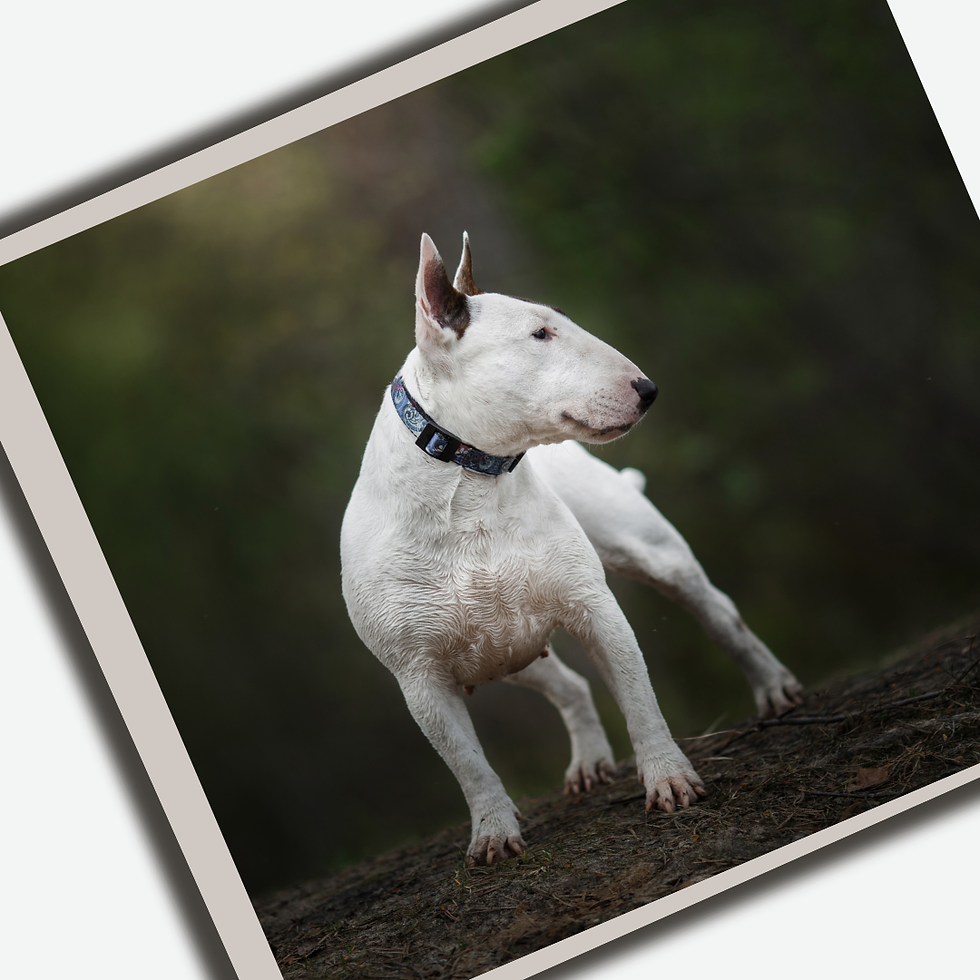
Caring for Your Bull Breed:
Top Tips
Keeping your Irish Staffy or Bull breed healthy doesn’t have to be overwhelming. Here’s how to stay proactive:
Visit the Vet Regularly:
Annual check-ups and screenings (e.g., for hips, heart, or airways) catch issues early.
Feed a Balanced Diet: Choose high-quality food and consider Advanced Animal Care’s supplements to support joints, skin, and overall wellbeing.
Exercise Smart:
Opt for low-impact activities like short walks or swimming, using our durable Harwering leather collars and leads for safety and comfort.
Groom Regularly: Check skin and coat health weekly, especially in humid climates, to prevent irritation.
Stay Informed: Research your breed’s needs and connect with UK or global Bull breed communities for tips.
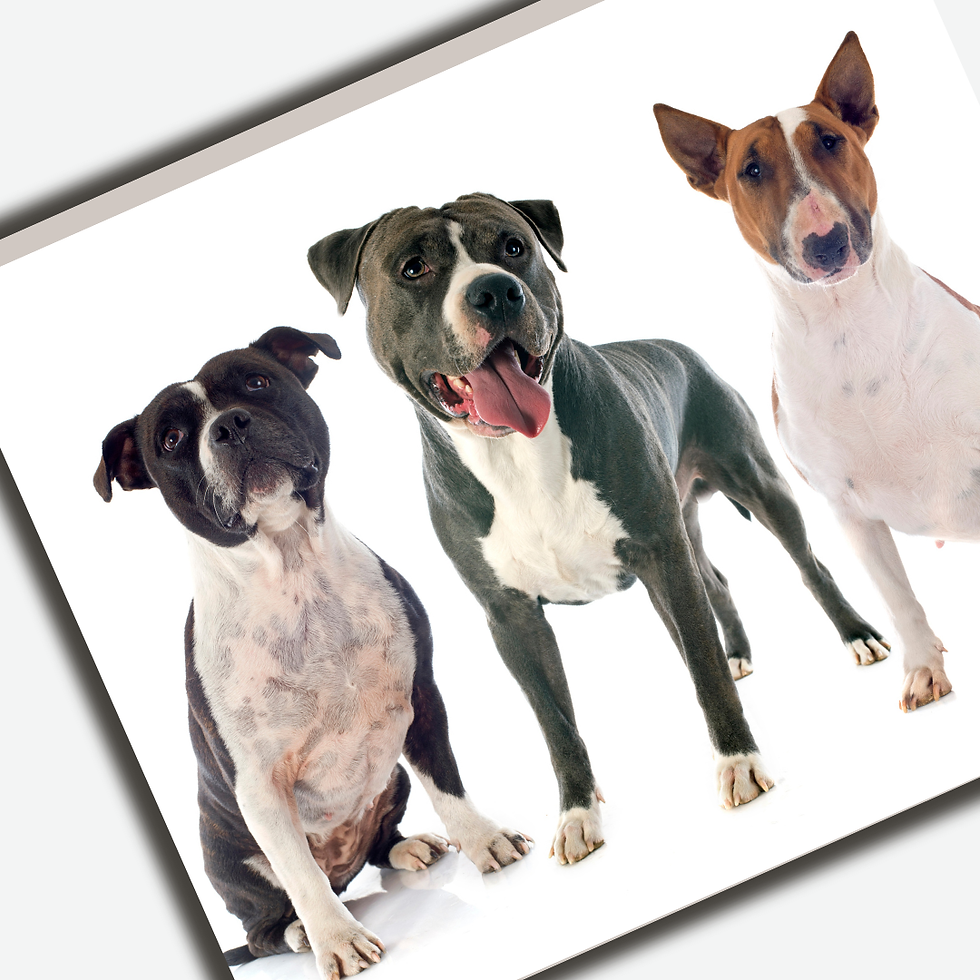
Busting Myths About Bull Breeds
Myth:
Bull breeds are always aggressive.
Truth: With proper training and socialisation, Irish Staffies and other Bull breeds are loyal, loving companions. A sturdy collar or lead helps maintain control during training
.Myth: They don’t need much care.
Truth:
Their health risks require proactive care, from diet to gear.









Comments